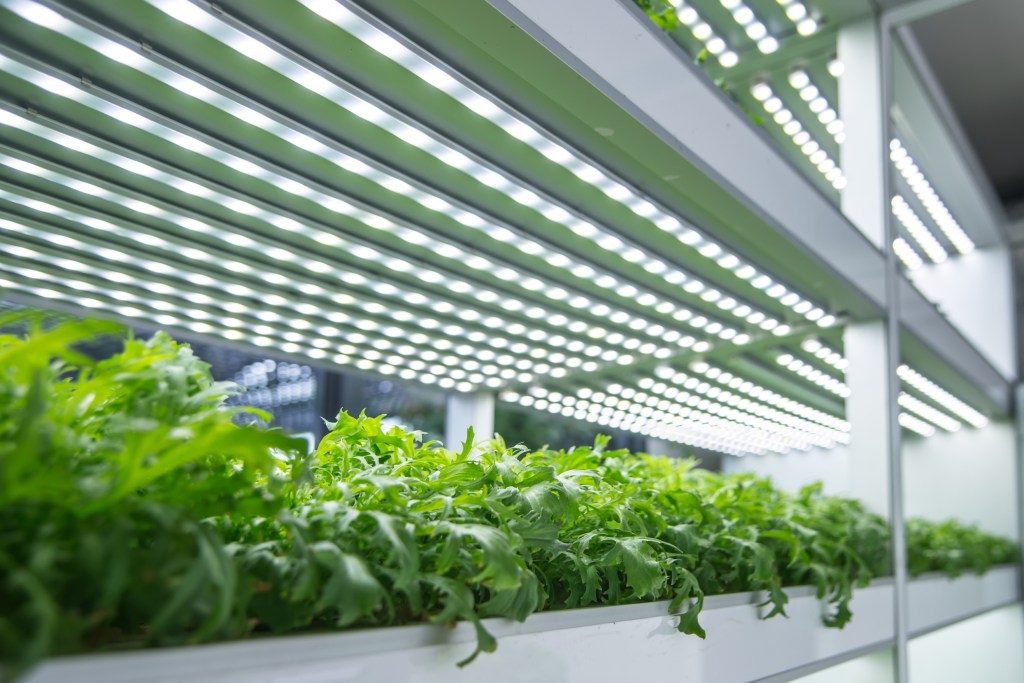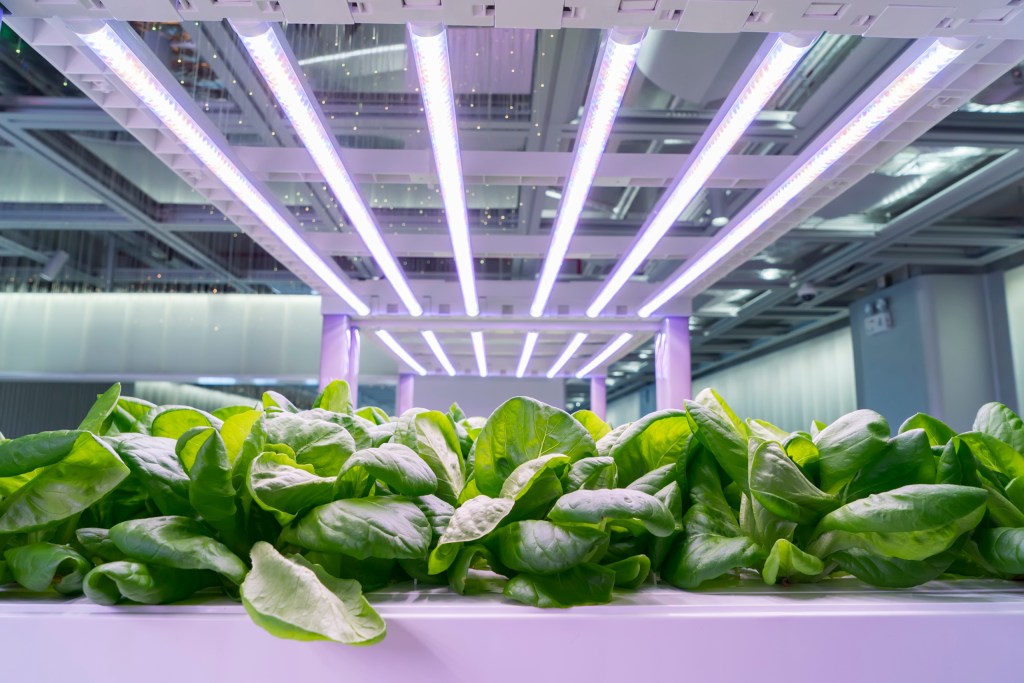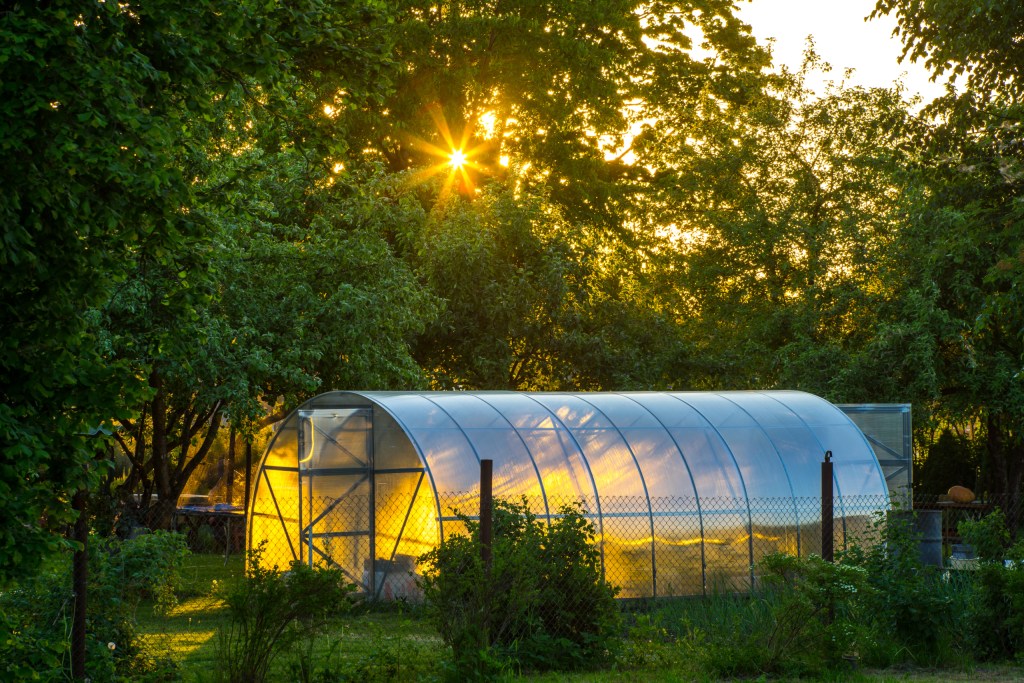It’s never been easier to garden indoors. Today, you can use grow lights to help cultivate many kinds of plants all year long, no matter where you happen to live. But, do grow lights work? Yes! Grow lights are designed to be a sunlight substitute that stimulates the photosynthesis process within plants by providing them with the right color spectrum.
You can grow all your favorite herbs, fruits, and vegetables year-round by using the correct bulb or fixture. Several kinds of grow lights are available on the market, with each having its own strengths and weaknesses. If you’ve been wondering whether grow lights would be an excellent investment for your greenhouse, we’ve got the answers.

What are grow lights anyway?
Greenhouse grow lights are obviously artificial lights. Some are designed to shine with a light spectrum, which is like that of the sun. Others provide a light spectrum that’s customized to the specific plants in your greenhouse. With grow lights, you’re able to copy specific spectral outputs, colors, and temperatures of light. Plus, you can vary the overall intensity of the light these bulbs and fixtures put out.
Do grow lights actually work?
In short, yes. However, many feel that they work only when you choose the right kind of light. While all grow lights promise to mimic the sun and to provide the color spectrum and temperature necessary for proper photosynthesis, there are some who don’t completely buy into the marketing hype surrounding them.

What types of grow lights are on the market?
There are three different types of “traditional” lights that people use to grow plants.
- High-pressure sodium lights
- Fluorescent lights
- Metal halide lights
Today, advances in technology have brought LED lights into the grow light competitive arena. However, it’s the LED lights specifically that some greenhouse owners feel aren’t living up to the publicity surrounding them.
High-pressure sodium lights
For those growing fruit and flowers, these types of lights are the most popular by far. High-pressure sodium lights produce intense, bright light that contains most of the oranges and reds within the color spectrum.
A downside is that they also get incredibly hot. If you use these kinds of grow lights, you’ll need to ensure that your greenhouse is well ventilated and that you manage the overall temperature inside.
Fluorescent lights
If you’re working with plants that need lower light levels or are starting seedlings, then fluorescent lights are a perfect choice. Typically inexpensive, you can usually find these types of lights in many stores. Also, they’re easier to use than any of the other grow lights on this list.
Be that as it may, these kind of grow lights aren’t that great as primary light sources. Used as secondary lighting, however, fluorescent lights can be pretty effective.
Metal halide lights
Of all the lights we mention here, metal halide lights provide the light that is closest to that of the sun. They work with all types of plants and are rated with a lumen output of about 100 lm per watt. They last for up to 20,000 hours. That means you could run them almost continuously for around three years straight before having to replace them!
However, a particular downside is that these lights also become incredibly hot. Touching one after it’s been turned on for a while can result in significant burns.
Greenhouse LED grow lights
There are some substantial benefits to using LED grow lights, even though some people, as mentioned above, don’t feel the technology is quite up to the standards of traditional lighting. However, LED lights have the following going for them:
- They’re environmentally friendly in that the lights are mercury-free and don’t shatter like glass.
- They last five times longer than fluorescent bulbs and use half the electricity.
- They produce a full spectrum of light, just like fluorescent lights on this list.
The problem here is that any energy and cost savings you might realize by using LED lights are negated by their initial cost, which can be rather expensive. Another downside is that LED light is more direct and less diffuse than more traditional lighting systems.

Are grow lights a good investment?
It’s an undeniable fact that plants grown in greenhouses yield a greater harvest when they’re provided healthy amounts of photosynthetic light. You’ll wind up with more leafy greens and larger, juicier fruit when your plants receive the light they need.
With that said, when winter arrives, the amount of sunlight decreases. Many geographic locations see significant dips in photosynthetic light in the colder months. For those who want to grow and harvest year-round, a grow lighting system that can supplement natural sunlight is an investment that makes sense.
Editors' Recommendations
- What you need to know about light deprivation (or ‘light dep’) greenhouses and how they work
- 3 of the best solar garden lights for a bright and eco-friendly yard
- 5 outdoor lighting tips we learned from experience so you didn’t have to
- 5 inexpensive indoor greenhouses your plants will love
- How to choose the best outdoor sink for your entertaining area



